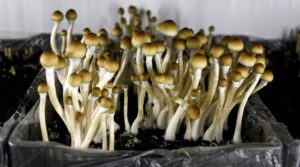Notable Elements
Hallucinogenic Mushrooms vs. Synthetic Psychedelics: This article provides a comparative analysis of naturally occurring hallucinogenic mushrooms and lab-created synthetic psychedelics.
Understanding Psilocybin: Learn about the psychoactive compound in magic mushrooms, its effects on the brain, and its historical and cultural significance.
Synthetic Psychedelics Explained: Get insights into synthetic psychedelics like LSD and MDMA, including their production process, effects, and how they interact with the brain.
Effects and Duration: Discover the differences in the duration and intensity of experiences between hallucinogenic mushrooms and synthetic psychedelics.
Risks and Safety: Understand the potential risks, including “bad trips,” and the factors influencing these experiences.
Legal Status: Gain knowledge about the varying legality of hallucinogenic mushrooms and synthetic psychedelics across the globe.
Therapeutic Potential: Explore the medical potential of both types of psychedelics in treating mental health conditions like depression, anxiety, PTSD, and substance use disorders.
Cultural and Historical Context: Delve into the traditional use of hallucinogenic mushrooms in indigenous cultures compared to the more recent development of synthetic psychedelics.
FAQs Addressed: Find answers to common questions regarding the differences, legality, and uses of hallucinogenic mushrooms and synthetic psychedelics.
Introduction
Psychedelics have been used for centuries by different cultures around the world for their hallucinogenic properties for religious, spiritual, and recreational purposes. In recent years, there has been a growing interest in the use of psychedelics for therapeutic benefits.
Among the various types of psychedelics, hallucinogenic mushrooms, and synthetic psychedelics have gained significant attention. This comparative study aims to explore the similarities and differences between hallucinogenic mushrooms and synthetic psychedelics, including their effects, risks, legality, and medical potential.
About Hallucinogenic Mushrooms:
Hallucinogenic mushrooms, also known as magic mushrooms or shrooms, contain the psychoactive compound psilocybin. They have a long history of traditional use in various cultures, including indigenous peoples of the Americas and Europe.
Psilocybin is converted to psilocin in the body, which binds with serotonin receptors in the brain, resulting in altered perception, sensory distortion, and changes in mood and cognition. The effects of hallucinogenic mushrooms can vary depending on the specific species and dosage. Experiences include euphoria, visual hallucinations, introspection, and spiritual experiences.

Origin and Types
Magic mushrooms belong to the genus Psilocybe, but there are over 200 species of psilocybin-containing mushrooms found worldwide. Some common species include Psilocybe cubensis, Psilocybe semilanceata (known as liberty caps), and Psilocybe cyanescens.
Psychoactive Compound
The main psychoactive compound in hallucinogenic mushrooms is psilocybin. When ingested, it is converted into psilocin, which interacts with serotonin receptors in the brain, leading to altered perception, sensations, and consciousness.
About Synthetic Psychedelics:
Synthetic psychedelics, also known as research chemicals or designer drugs, are chemically created compounds that mimic the effects of naturally occurring psychedelics. They include substances such as LSD (lysergic acid diethylamide), MDMA (3,4-methylenedioxymethamphetamine), and DMT (dimethyltryptamine).
These substances are often synthesized in laboratories and may have effects similar to hallucinogenic mushrooms but with variations in potency and duration. Synthetic psychedelics interact with serotonin receptors in the brain, causing alterations in sensory perception, mood, and consciousness.
Production Process
Synthetic mushrooms are produced in controlled lab environments using biotechnology methods. The process typically involves obtaining a small sample of mushroom tissue, often from a specific species, and then cultivating it in a nutrient-rich medium under controlled conditions. The mycelium (the vegetative part of the fungus) grows and spreads within the medium, forming the mushroom’s characteristic structure. 3D printing technology creates the desired shape and texture of the final product.
Nutritional Content
Unlike natural mushrooms, synthetic mushrooms have a similar nutritional profile. They are low in calories, fat, and sodium and are rich in essential nutrients like vitamins (such as Vitamin B and D), minerals (like potassium and phosphorus), fiber, and antioxidants. Some synthetic mushroom varieties are fortified with additional nutrients to meet specific dietary requirements.
Flavor and Texture
Using various growth conditions and nutrients, scientists aim to recreate the earthy, umami taste of mushrooms with synthetic mushrooms. Texture-enhancing additives achieve the desired firmness, juiciness, and mouthfeel.

Sustainability
Synthetic mushrooms offer the potential for a more sustainable alternative to traditional mushroom farming. They can be grown in controlled environments, reducing the need for vast land, pesticides, and water. The process also allows for year-round production without being subject to seasonal factors. Moreover, lab-grown mushrooms are produced with minimal waste and can be optimized to require fewer resources.
Applications
Synthetic mushrooms have ample applications and are used as a substitute for natural mushrooms in various industries. In culinary dishes, vegetarian or vegan products, dietary supplements, and pharmaceuticals, they are used. They also have the potential to develop novel food products and food fortification.
Challenges
Despite the promising aspects, there are several challenges associated with synthetic mushrooms. The cost of production is currently relatively high, making them less accessible to the mass market. Additionally, achieving the exact taste and texture of natural mushrooms is complex and requires continuous research and development. Regulatory frameworks also need to be established to ensure the safety, labeling, and commercial viability of synthetic mushroom products.
Effects and Risks:
Both hallucinogenic mushrooms and synthetic psychedelics can induce similar hallucinogenic experiences, including altered perception of time and space, synesthesia (blending of sensory experiences), and intense emotional states. However, there are some distinctions too.
Hallucinogenic mushrooms typically have a shorter duration of effects (4-6 hours), while synthetic psychedelics like LSD can last up to 12 hours or more. The intensity of the experience may also differ, with some synthetic psychedelics purportedly providing more potent and profound effects compared to mushrooms.
In terms of risks, both hallucinogenic mushrooms and synthetic psychedelics have similar potential adverse effects. These may include anxiety, paranoia, panic reactions, and traumatic experiences, commonly referred to as “bad trips.” The likelihood of these negative experiences is influenced by factors such as set (mental state) and setting (environment).
**To be noted– It is important to note that the risks associated with psychedelics are highly individual and can vary depending on the user’s mental state, dosage, and overall context of use.
Legality:
The legal status of hallucinogenic mushrooms and synthetic psychedelics varies worldwide. Mushrooms containing psilocybin and psilocin are controlled substances in many countries. In some places, such as Brazil and Jamaica, certain species of hallucinogenic mushrooms are legal and culturally accepted.
Synthetic psychedelics, on the other hand, are generally illegal in most countries. However, enforcement of drug laws can vary, and the legality of compounds marketed as “research chemicals” may be unclear or constantly evolving.
Medical Potential:
Both hallucinogenic mushrooms and synthetic psychedelics have shown potential in therapeutic contexts. Psilocybin, the active compound in mushrooms, has been investigated for its potential use in treating various mental health conditions, including depression, anxiety, obsessive-compulsive disorder (OCD), and substance use disorders. Clinical research has shown promising results, with psilocybin-assisted therapy demonstrating long-lasting positive effects on mood and subjective well-being.
Similarly, synthetic psychedelics like MDMA are studied for their potential efficacy in treating post-traumatic stress disorder (PTSD). MDMA-assisted psychotherapy has shown promising results in reducing PTSD symptoms and improving emotional resilience. However, more research is needed to understand the mechanisms of action, optimal dosing, and long-term effects.
Also Read : Different Types of Psychedelic Mushrooms
Conclusion:
Hallucinogenic mushrooms and synthetic psychedelics share similarities in their ability to induce hallucinogenic experiences and alter perception, mood, and cognition. Both substances carry similar risks and potential benefits, and their legal status varies globally.
While hallucinogenic mushrooms have a more profound historical and cultural background, synthetic psychedelics offer the advantage of precise dosing and potentially enhanced effects. Both types of psychedelics have significant potential for therapeutic use, but further research is needed to understand their mechanisms of action and long-term effects.
FAQs:
Q: How do hallucinogenic mushrooms differ from synthetic psychedelics?
A: Hallucinogenic mushrooms are naturally occurring organisms used for centuries in various cultural and spiritual practices. They contain psilocybin, a naturally derived compound. On the other hand, synthetic psychedelics are man-made substances designed to replicate the effects of naturally occurring psychedelics created by altering the chemical structure to produce similar effects.
Q: Are hallucinogenic mushrooms legal?
A: The legality of hallucinogenic mushrooms varies depending on the jurisdiction. In some countries, such as Brazil and Jamaica, certain species of magic mushrooms are exempted from drug laws. In others, like the Netherlands and Portugal, the use of magic mushrooms is decriminalized or tolerated to some extent. However, in many places, including the United States and Canada, psilocybin-containing mushrooms are considered illegal Schedule I substances.
Q: What about synthetic psychedelics?
A: The legal status of synthetic psychedelics also varies from country to country. In many places, substances like LSD or MDMA (ecstasy) are considered illegal and classified as controlled substances. However, due to the constantly evolving nature of synthetic drugs, it can be challenging for authorities to keep up with the newer compounds that emerge. It often leads to legal grey areas, where some synthetic psychedelics are temporarily legal until they are specifically banned.

Hi! I’m Jacob Hawthorne, a passionate medical student dedicated to exploring the fascinating world of psychedelics, particularly magic mushrooms (commonly known as shrooms). With a deep interest in their therapeutic potential and profound effects on the human mind, I aim to provide accurate and evidence-based information about shrooms in the Canadian context.

